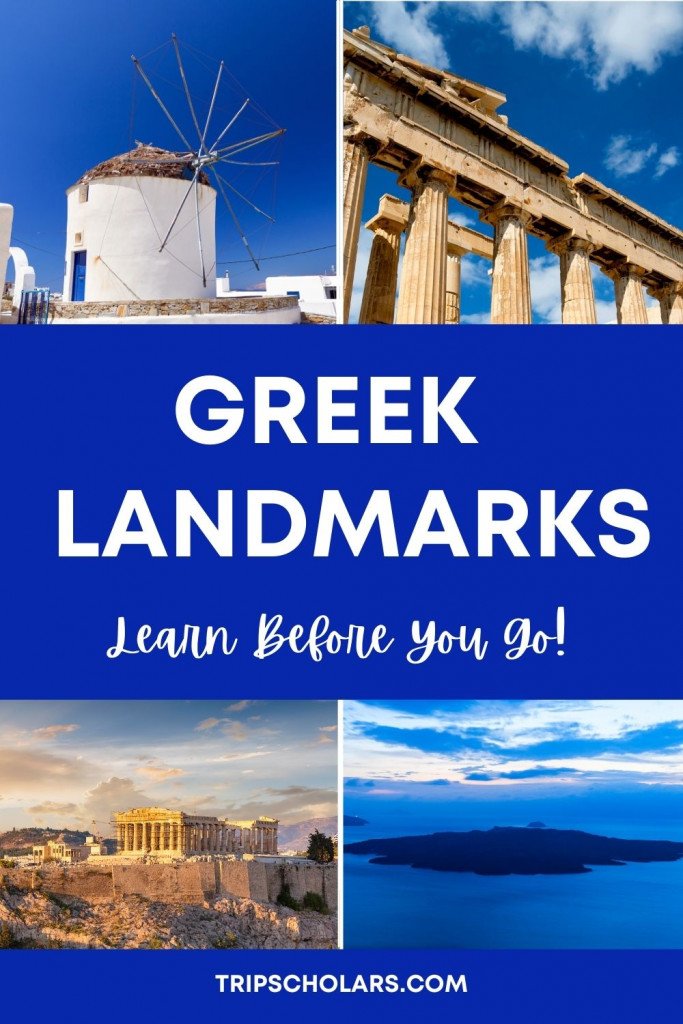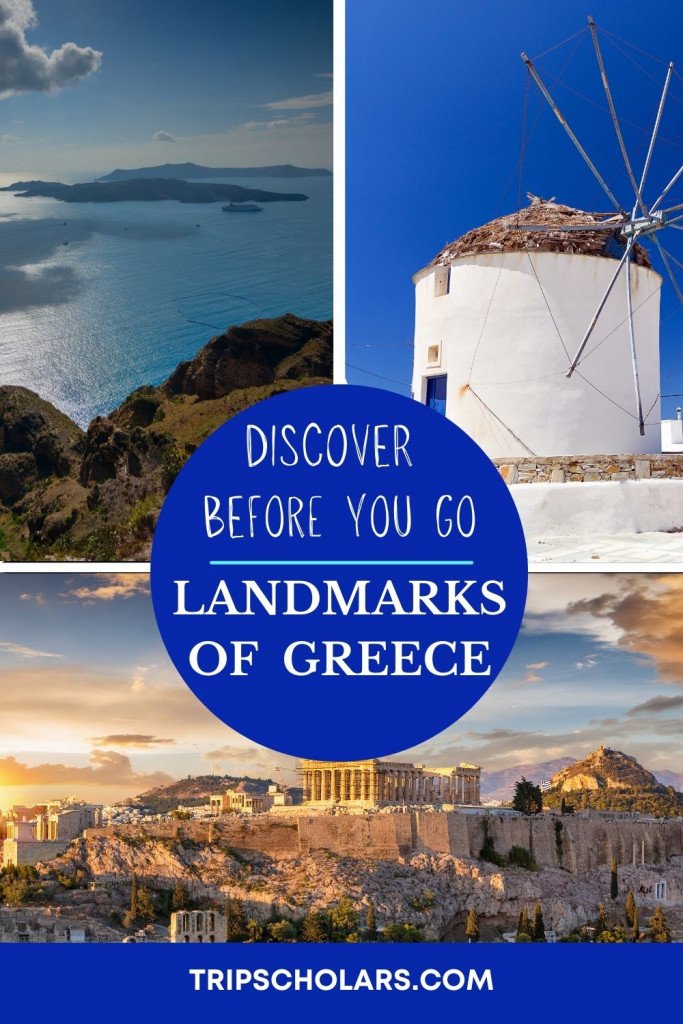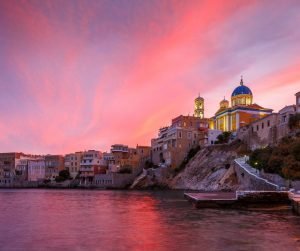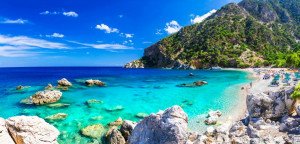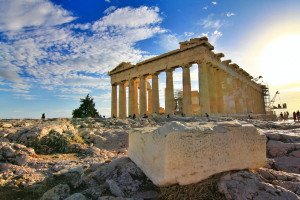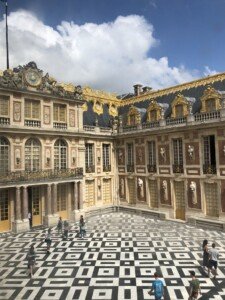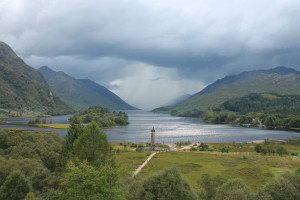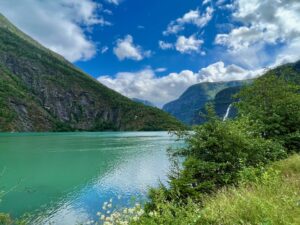25 Famous Landmarks of Greece With Tips to Visit and Explore From Home
This post may contain affiliate links which means Trip Scholars may make a small commission (at no extra cost to you) if you make a purchase. As an Amazon Associate I earn from qualifying purchases. Read more here. Thanks for helping us keep the lights on!
Many of the landmarks in Greece have had a profound impact on human history and are integral to legends, literature, and countless pieces of artwork. You have likely been encountering these landmarks of Greece in your studies and and through popular culture throughout your life. Imagine visiting them in person!
Landmarks in Greece connect us to the country’s rich history, vibrant culture, and stunning natural beauty. They inspire curiosity and spark our travel dreams. Discover the most famous landmarks of Greece and learn more about them.
This collection of landmarks is especially for curious travelers, and we have added ideas about how to travel from home related to each destination. You will find entertaining and educational resources so that you can extend the wonder of your trip to the months and years before and after you visit.
I’ve asked professional travel writers to share their favorite resources related to Greek landmarks so you can better appreciate and understand these fascinating places.
Famous Landmarks of Greece
Table of Contents
Achilleion Palace in Corfu
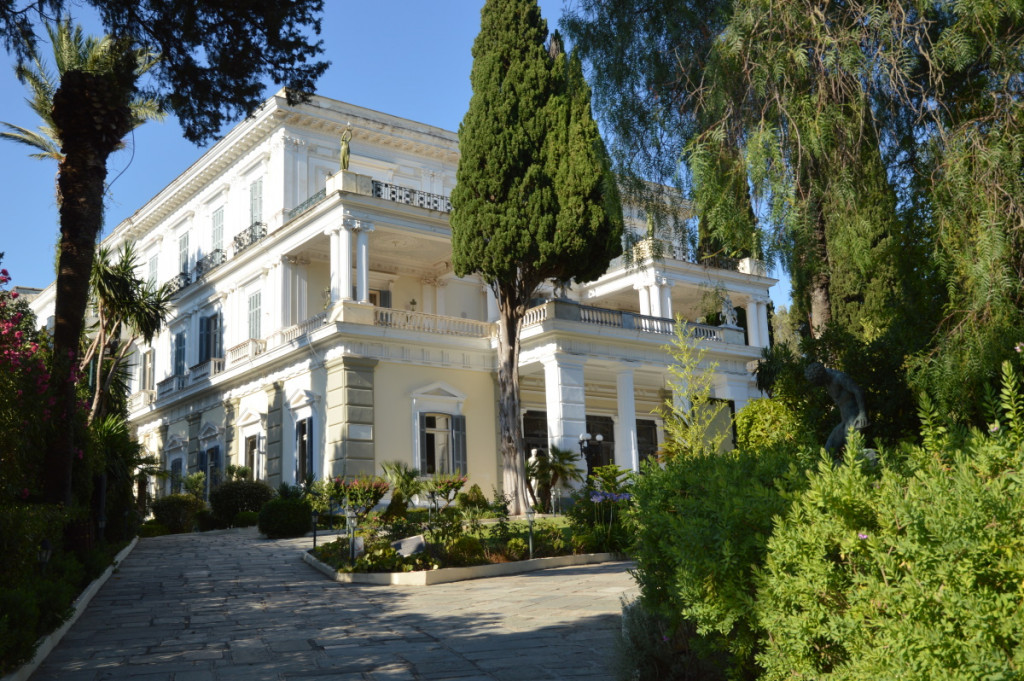
One of the most beautiful landmarks in Greece is the Achilleion Palace, also known as the Palace of Princess Elizabeth of Austria. Corfu Island is known for its beautiful beaches, but visitors will also want to visit the palace.
The Empress of Austria, Elizabeth (Sissi), fell in love with Corfu and Greek culture, so she decided to build a palace here. Depressed after her son’s suicide, she bought the land on which Achilleion Palace was built, in Gastouri, 10 km from Corfu town. The palace was her place of refuge, so she left her mark on its decoration. During the world wars, the palace was a war hospital, after that a kindergarten, and later, a casino. Now the palace has become a museum and can be visited both inside and outside. You can reach the gate by car and, after paying the entrance fee, you will receive an audio guide in various languages.
The palace is impressive! It is decorated with motifs from Greek mythology and is dedicated to the Greek hero Achilles (hence the name). You can walk through its rooms to admire the works of art, the objects of the royal families that lived here and elements of Greek culture. The high position offers visitors beautiful views of the Ionian Sea and the green island.
On hot summer afternoons, a visit to Achilleion Palace in Corfu is a perfect choice.
Contributed by Corina Preda at Another Milestone
Travel From Home
Click here to watch
A scene from the James Bond movie, "For Your Eyes Only" (1981) was filmed here. Watch it before you visit the palace.
Travel in Greece
The Acropolis
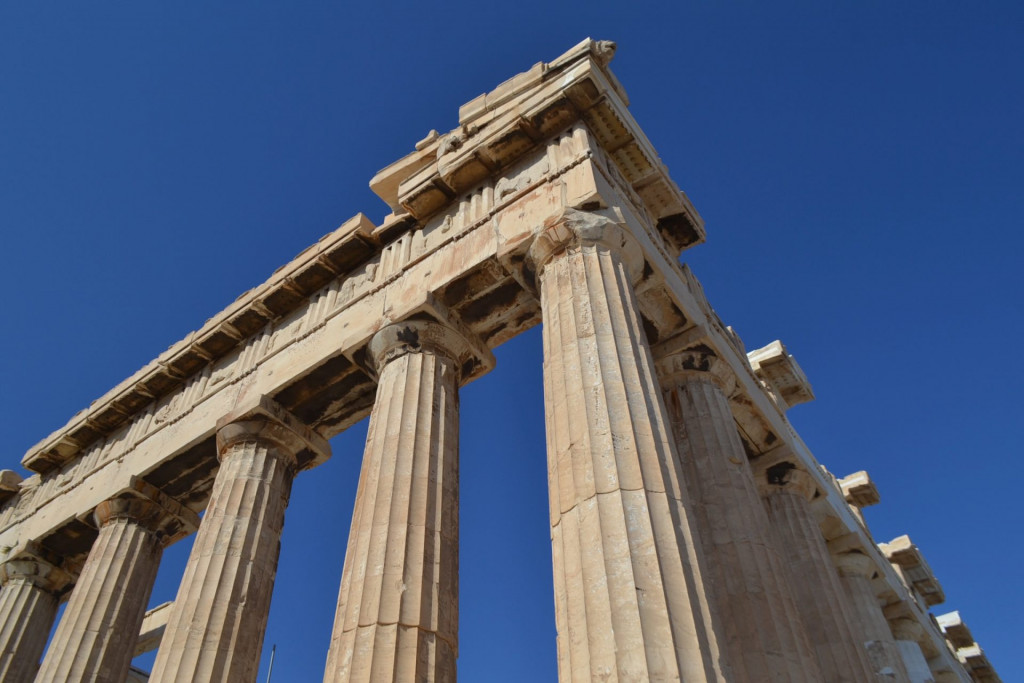
The Acropolis of Athens is arguably the most iconic landmark of Western Civilization. Most of the monuments we can now visit on the Acropolis were built during the height of Classical Greek Civilization around the fifth century BCE. After winning the war against the Persians, the great Athenian statesman Pericles (495-429 BCE) initiated much of the construction of the Acropolis. Democratic institutions, art, and philosophical thought all flourished during the Golden Age of Athens. Exceptional artists and architects helped to transform the rocky outcrop into the UNESCO site we cherish today.
The most important monuments on the Acropolis are the Parthenon, the Propylaea, the Erechtheion, and the Temple of Athena Nike. South of the top platform are the Odeon of Herodes Atticus and the Theater of Dionysus. The term acropolis is generic and comes from the Greek akron (highest point) and polis (city). There were many acropolies throughout the Greek world, but it is the Acropolis of Athens that has become a symbol of classical civilization. The extraordinary architectural and artistic monuments that surpassed those of neighboring cities survived for modern visitors to enjoy today.
To avoid the very long lines, get the Combo Ticket in advance, use the south east side entrance, and arrive before the gates open or late in the afternoon. Wear good walking shoes, you’ll be walking on marble; and bring water and a hat since there are very few trees offering shade.
Erica at Trip Scholars
Travel From Home
Click here to watch
To learn more about the Acropolis from home, watch, "The Great Tours: Greece and Turkey, from Athens to Istanbul." The second episode is all about the history of the Acropolis with tips on how to make the most of your visit. Enjoy the 14 day free trial to the Great Courses/Wondruim.
Travel in Greece
Ancient Agora and Temple of Hephaestus
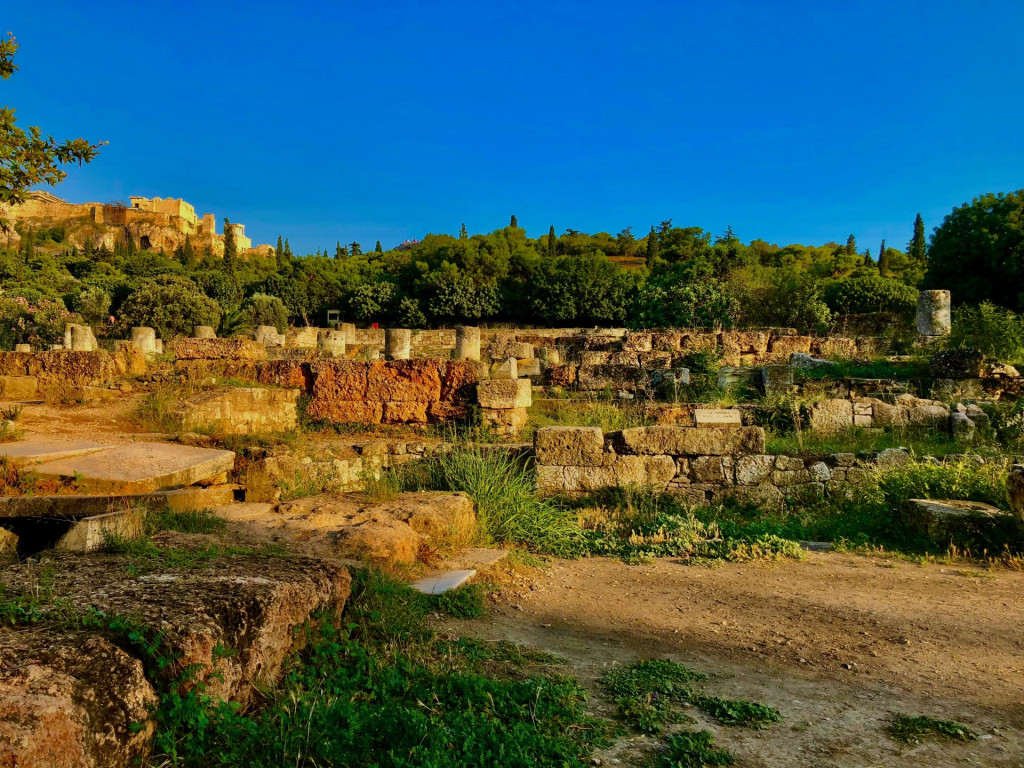
The Ancient Agora lies just beneath the Acropolis and was the center of Athenian life during the Classical Age. The Acropolis was only visited on special occasions, but the Agora was where Athenian citizens (free men only) met daily. It was where commercial, social, cultural, political, administrative, and religious activities took place.
There are many important sites to see within the ancient city center. The Temple of Hephaestus is recognized as the most well preserved ancient Greek temple in the world. It survived in large part because it was used as a Christian church starting in the 7th century. The Museum of the Agora is within the Stoa Attalos and includes exhibitions about life in Ancient Athens.
Erica at Trip Scholars
Travel From Home
Click here to read
For an in-depth exploration of the Ancient Agora from home, check out, "The Athenian Agora, A Short Guide to the Excavations" created by the American School of Classical Studies at Athens. It is authored by John McK Camp, the current director of the excavation of the entire Agora. It offers details about each of the archeological sites you will visit as well as a broader understanding of the successive cultures that influenced the Agora.
Travel in Greece
Ancient Akrotiri
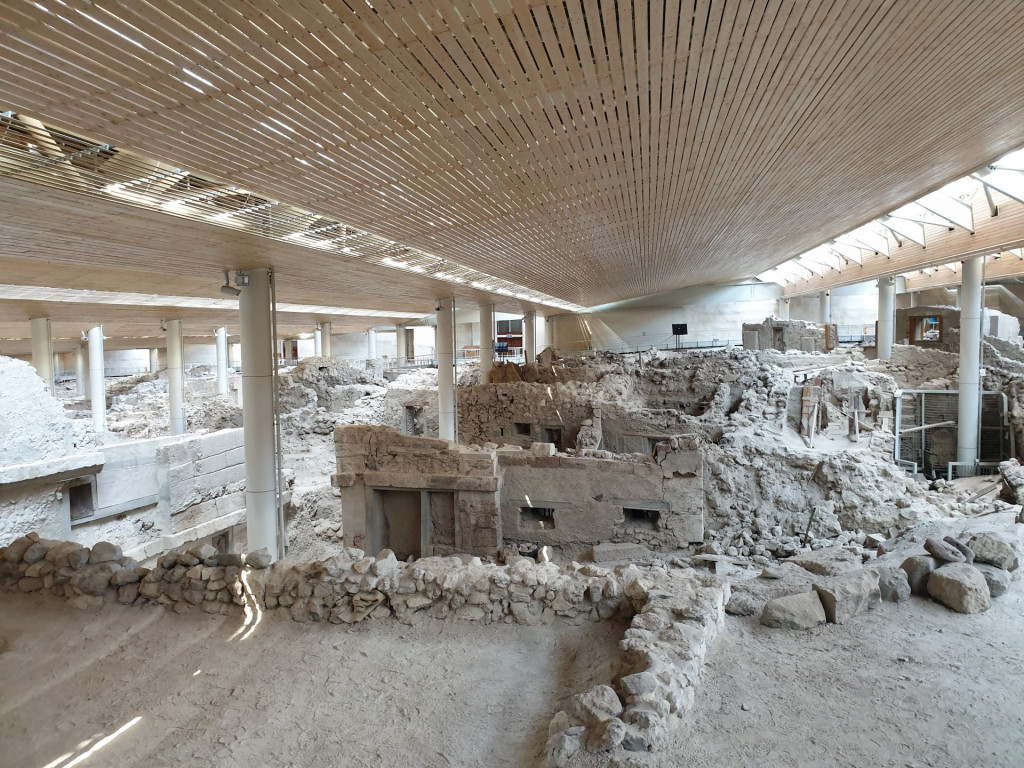
The eruption of the Theran volcano 3,500 years ago brought an end to the Minoan civilization of Greece and blew up the island of Thera into five separate islands. The most well-known of these is beautiful Santorini.
At the southern tip of this small island, adjacent to the little fishing town of Akrotiri, is an ancient Minoan city that was buried in lava. Ancient Akrotiri has been called the ‘Pompeii of Greece’ but not many travelers have discovered it yet.
The site is covered by a tall roof to protect the site and walkways take you through what has been excavated so far of the city. Akrotiri was a wealthy city, and its residents were able to sail away and take all their valuable goods with them before the lava reached them.
The houses and buildings of this wealthy ancient city were three stories high and are being reconstructed. You can walk along some of these ancient streets and peer through windows into the homes that were so hastily abandoned.
Don’t miss this incredible ancient Greek ruin when you visit Santorini. Of all the locations for the mythical Lost City of Atlantis, this is the most credible place for the myth to have begun.
Contributed by Monique at Trip Anthropologist
Travel From Home
Click hereto play
Kids and adults will love the Akrotiri Board Game by Z-Man Games where players are ancient Greek explorers finding and excavating lost Minoan temples on the island of Thera. Just like modern travelers, Akrotiri board game players have to do a lot of Greek island hopping!
Travel in Greece
Ancient Messene
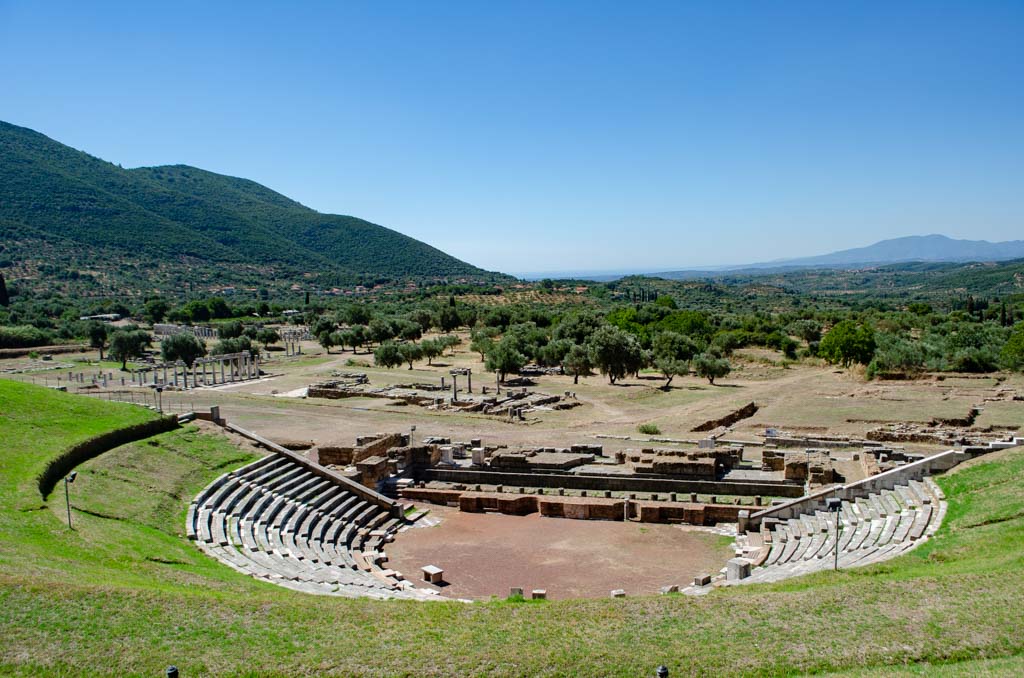
Ancient Messene is one of the most spectacularly preserved archaeological sites of Greece. This UNESCO monument is located in the Peloponnese, built on the slopes of Mount Ithome. Those planning to spend some days in the area around Kalamata, should definitely add a visit to their itinerary. This archaeological site is not as famous as some other landmarks of Greece, yet those who do decide to visit this lesser-known jewel will be truly amazed. Ancient Messene is an entire city that was built according to the Hippodameian system. With every passing year, modern-day archeologists bring more discoveries to light from the continuous findings of the excavations.
The site was built in 369 BC and the city was named after the mythical Doric queen, the daughter of king Triopas of Argos.
The city was first founded in the 4th century B.C. by Epaminondas, a general from Thebes and soon became the capital of the Messenian state. The is plenty to see here from the theater to the Agora, the Vouleuterion, and one of the most impressive and exceptionally preserved ancient stadiums that have been discovered. Be prepared for plenty of walking.
Contributed by Elena at Travel Greece Travel Europe
Travel From Home
Click here to read
For those who might enjoy some extra reading, there is a book by Petros Themelis called Ancient Messene which offers a concise presentation of the archaeological site of Messene by its excavator and head of the restoration program.
Travel in Greece
Click here to learn more
A link to the official site with current admission information.
Ancient Theatre and Sanctuary of the Asklepieion at Epidaurus

The Asklepion at Epidaurus was the most important healing center of the Classical world and served patients for over a thousand years from about the 6th century BCE to the 6th century CE.
Epidaurus/Epidavros was thought to be the birthplace of Apollo’s son Asclepius, the healer. Today, the Rod of Asclepius has become the most prominent symbol for healthcare in the world. Ill people traveled great distances to the sanctuary with the hope of being cured.
The healing center included surgery rooms, a restaurant, dormitories, healing baths, temples, gardens, a stadium, and a theater. When supplicants arrived, they were brought to the most sacred part of the sanctuary to sleep, and their dreams or visions were interpreted to help plan their therapy.
Visitors today can explore the archaeological sites and visit the small but fascinating museum with artifacts from the site, including many ancient medical devices.
The highlight of the sanctuary is the Ancient Theater. Today it is recognized as the most perfect ancient Greek theater because of its remarkable acoustics and outstanding preservation. Visitors can speak softly from the circular slab that was once the altar and be heard by their companions on the top tier of the amphitheater.
If you are traveling to Greece, consider visiting during the Athens Epidaurus Festival in the summer when live performances, often of ancient Greek plays, are performed. It is living history at its best! Plan to arrive and explore the sanctuary for the afternoon, stay for dinner on site, and then enjoy the performance.
Erica at Trip Scholars
Travel From Home
Click here to read
To learn more about the scientific sophistication behind the theater’s acoustics, check out this article in, "Nature."
Travel in Greece
Aristotle’s Lyceum

Plato, Socrates, and of course, Aristotle all taught here. The space served many purposes long before it became Aristotle’s school. It was initially a sanctuary and eventually a public meeting place, military training ground, gymnasium, and more.
After Plato’s death, Aristotle left Athens but he returned in 335 BCE and began teaching at the Lyceum regularly. This is where he wrote most of his books and also collected books for the first European library. Alexander the Great, his former pupil, sent him books and plant and animal specimens that he used to create a museum/zoo/botanical garden for students and scholars to use in conjunction with the library. His focus on direct observation of nature was pivotal in the history of scientific inquiry. The surviving works from Aristotle’s library provide the foundation for much of our understanding of Classical thought.
Visitors today will find the site inspiring. While it is true that the physical ruins are not nearly as impressive as many of the other landmarks in Greece, the historical significance of the place is overwhelming. It has been enhanced by surrounding the excavations with a verdant peaceful garden and shady benches inviting quiet reflection. Located in the center of the city, it is a wonderful respite from the crowds and heat. It is easy to get to and the admission is included in your combo ticket.
Erica at Trip Scholars
Travel From Home
Click here to read
Some historical background will greatly enhance your appreciation of the ruins. Reading any of Aristotle’s works beforehand will dramatically improve your visit.
Travel in Greece
Chania Old Town
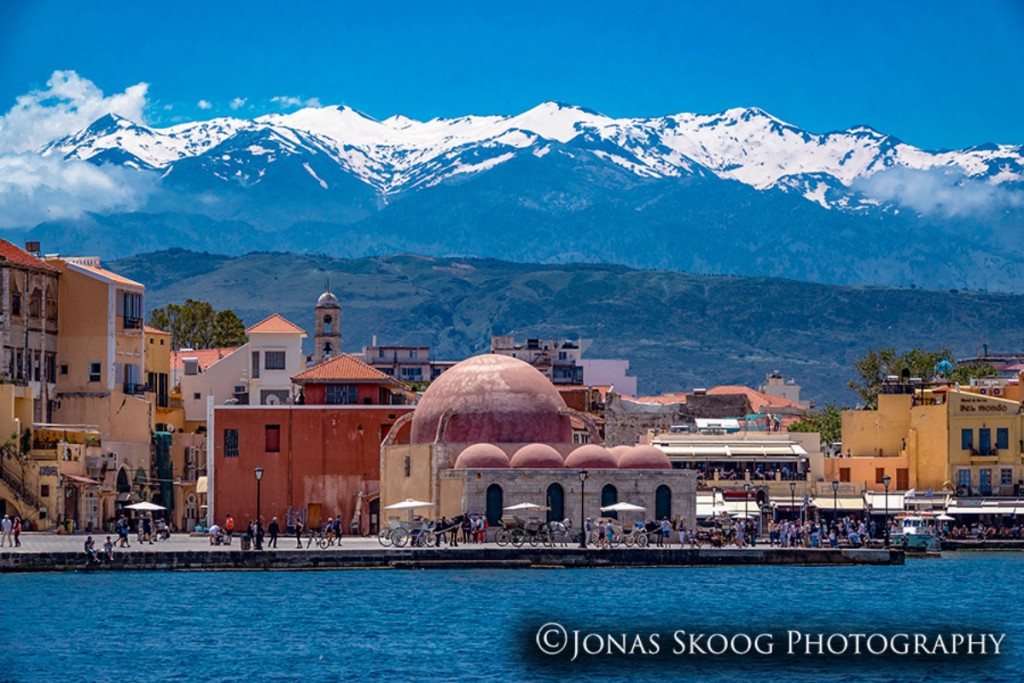
You will be captivated from the moment you step foot in the old town of Chania on the island of Crete in Greece. A stroll through the picturesque pedestrian only streets will show the unique blending of historical buildings with traditional and modern architecture.
The town of Chania, first inhabited in the Neolithic period, has had a tormented past with numerous invaders. As a result, the Venetian and Ottoman influence can clearly be seen throughout the town in various buildings and monuments.
The old town of Chania is easy to explore on foot and offers so many things to see, do and experience for travelers visiting Crete. The old Venetian Harbour area is the most popular spot for tourists due to the abundance of history, beauty and amazing cafes, restaurants and Greek tavernas specializing in Cretan food.
A stroll along Kondylaki Street in the Jewish Quarter will showcase the history of Chania. Here you will find Etz Hayyim Synagogue, the only Jewish synagogue left on the island, the Archaeological Museum of Chania, and the famous Leather Street, otherwise known as Stivanadika Street.
Contributed by Peta and Jonas of Exit45 Travels
Travel From Home
Click here to read
If you are looking for Greek travel inspiration, ‘Anthony Bourdain: No Reservations’ has a great series on the Greek Islands. In this episode, he visits Chania town and raves about the flaky rich pastry dish called bougatsa which is an amazing cheese filled filo covered with sugar and cinnamon. To taste this delicious Greek pastry, head to the restaurant 'Bougatsa Chania' which is also a very popular breakfast spot!
Travel in Greece
Corinth Canal

Another important Greek landmark is the Corinth Canal, a man-made canal connecting the Gulf of Corinth with the Saronic Gulf in the Aegean Sea.
The origins of this man-made waterway are old, the first attempts to make the canal through the Corinth Isthmus were attempted in the first century, but they were unsuccessful. The project was considered for centuries but did not actually begin until 1881. It took eleven years to cut through the sheer rock, and the canal was finally completed in 1893.
The canal is 21 meters wide and runs for 6 kilometers. It is important for transporting goods and passenger ships. It shortened the trip around Greece by approximately 350 km.
The canal is used by cargo and cruise vessels, as well as tourist boats. Containers are rarely transported through the canal due to its tight corners.
The Corinth Canal is a place of great significance for the economy as well as for the social life around it because it is an important trade route between the Eastern and Western Mediterranean Sea. In addition, it is a place one admires as industrial heritage and a gift from the past.
There are seven bridges crossing over the canal, from which you can admire the view. The most intriguing bridge is the entry to the canal, which goes down underwater every time ship is crossing the canal.
Contributed by Ania James of The Traveling Twins
Travel From Home
Click here to watch
If you want to see how Greece and Corinth Canal looked in 1950, I recommend the YouTube video, "Corinth Canal, 1951."
Travel in Greece
Delos
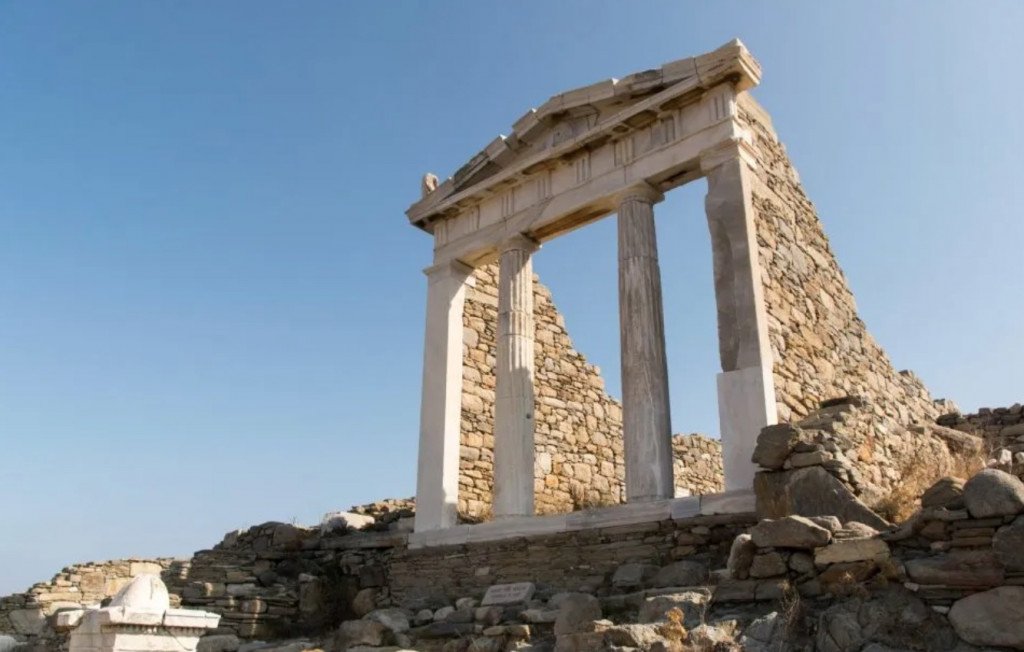
For a famous UNESCO site in Greece, the island of Delos is not to be missed. Located just a short boat trip away from Mykonos, it’s easily visitable for a day trip from the harbour. This important landmark location is a well-known archaeological site, being the mythological birthplace of Apollo.
Once you arrive on the island, there are multiple walking routes available. Choose yours based on the highlights and the length of the route. Also visit the two museums situated on the island: The Archaeological Museum of Delos and The National Archaeological Museum of Athens. Both are accessible for you to enter as they are included in your ticket to Delos.
Contributed by Zoe at Together in Transit
Travel From Home
Click here to read
Read the book, "Delos-Mykonos: A Guide to the History and Archeology," which is perfect for learning about history of Delos. It's an advantage to understand the past and present of the island.
Travel in Greece
Delphi
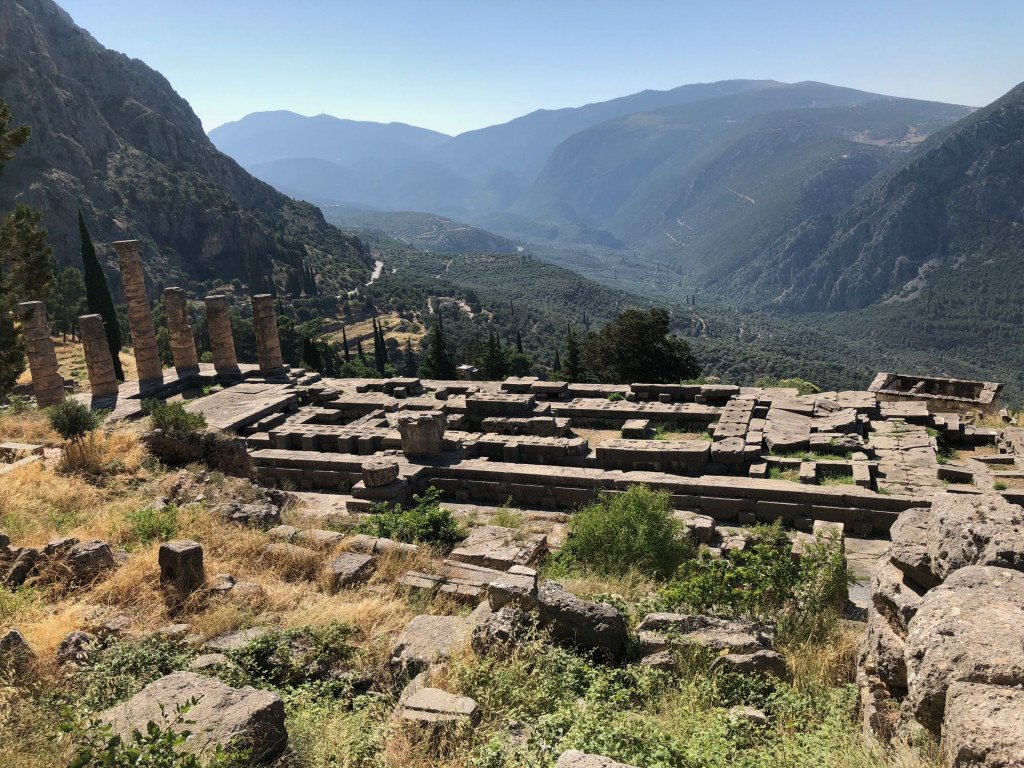
One of the greatest landmarks in Greece is the UNESCO site, Delphi. It was recognized as the center of the world by early Greeks and some of their Greek influenced neighbors. The stone monument here, known as the omphalos, was thought to be the bellybutton of the world.
The sanctuary grew around a chasm in the rock that was thought of as the womb of the world and was earlier a place of Gaia worship. In one myth, Apollo slew the snake-child of Gaia who guarded the area, and thus replaced the mother goddess with himself. It became a place of pilgrimage and divination. For hundreds of years, major undertakings and decisions were only made after consulting the oracle at Delphi.
Within the Temple of Apollo, the priestess, also known as the Pythia or sybil, sat in a trance atop a stool and channeled divine thought. The priest interpreted her ecstatic speech into allegorical prophecies that he offered to the supplicants asking their questions. It was then up to the inquirer to decipher the riddles of the oracle and decide how to proceed. It is now thought that the Pythia sat over a crack in the ground that emitted vapors altering her consciousness, although some scholars think the priestesses smoked or chewed hallucinogenic plants.
A large complex grew around Delphi. Greek city-states built treasuries to hold their offerings to Apollo: their tithes, or tenths of the spoils from their war victories. It was also one of the four locations of the early Greek games. The complex includes a stadium, hippodrome, gymnasium and numerous monuments.
Visitors today can walk up the Sacred Way and see these important sites. Get the combo ticket and visit the Delphi Archeological Museum, home to fascinating objects found on the site.
Erica at Trip Scholars
Travel From Home
Click here to watch
For a much richer understanding of Delphi, invest an hour watching the documentary, “Delphi, Bellybutton of the World.” It is by Michael Scott, a classical scholar and documentarian who is fascinating and entertaining.
Travel in Greece
Knossos
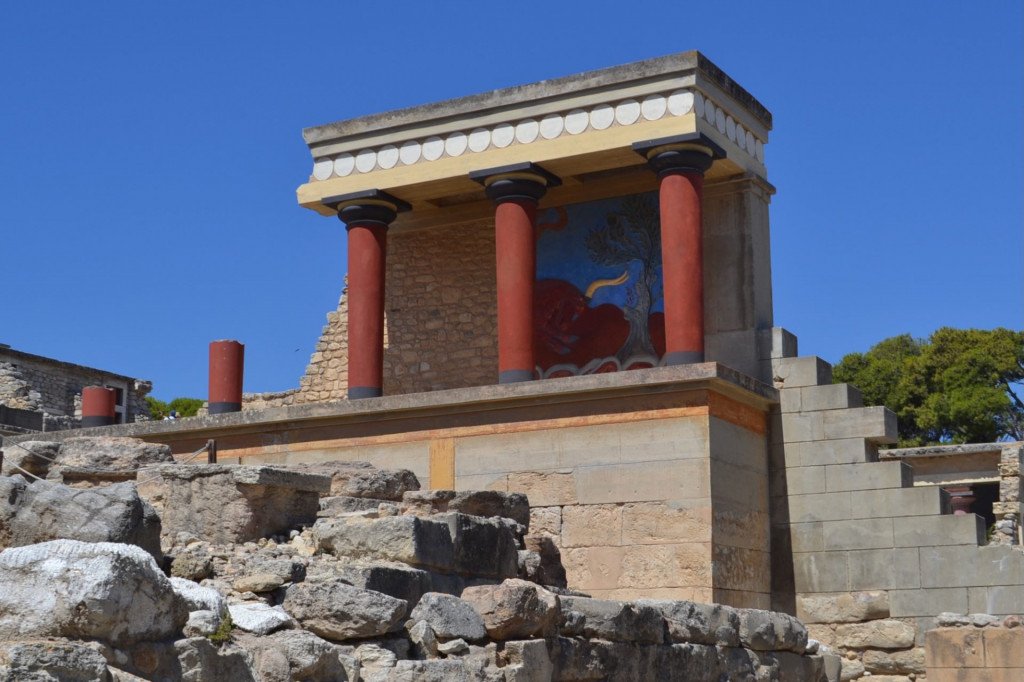
Knossos is often recognized as the first European city, and it is a fascinating Greek landmark to visit on the island of Crete. The site was originally a Neolithic settlement with artifacts that have been found dating back to 7000 BCE. Unlike the Neolithic village cultures that predated them throughout Europe, the Minoans had a cities and palaces. Minoan civilization existed from about 3500 BCE to 1100 BCE and reached its peak around 1700 BCE. Knossos was the largest and most influential palace complex of them all.
The complex includes over 1300 rooms, sophisticated plumbing, a theater, and elaborate, unique artwork. The Minoans were literate, traded widely, and brought order to the region.
The civilization was named by the British archaeologist Sir Arthur Evans, who derived it from the legend of King Minos. He identified Knossos with the myth of the labyrinth, Ariadne, and the Minotaur because of the elaborate underground passageways and buildings at Knossos as well as the prevalent depictions of bull worship and bull jumping throughout the complex.
The techniques used by Arthur Evans in the excavation and restoration of the site highlight the history of archeology and are today seen by many as irresponsible and damaging. He restored parts of the palace complex with brightly painted reinforced concrete, an approach that is shunned by modern archaeologists. Still, Evans enthusiastically devoted thirty years of his life to the site, and we owe much of our understanding to him and his team.
Today visitors can tour the palace complex grounds on their own or with a guide. Guides are available for hire outside of the entrance, but the quality varies. You can also reserve a tour in advance using the link below. Be sure to visit the nearby Heraklion Archaeological Museum, which houses extraordinary treasures from the site.
Erica at Trip Scholars
Travel From Home
Click here to watch
Before your visit, watch the documentary “The Minoans, Ancient Worlds,” by the historian Bettany Hughes. She is an author, television personality, and has been a popular history professor at Cambridge and Oxford. Her contagious enthusiasm for the Knossos, and indeed all classical history, will inspire you to want to learn more and book your travels today!
Travel in Greece
Medieval City of Rhodes
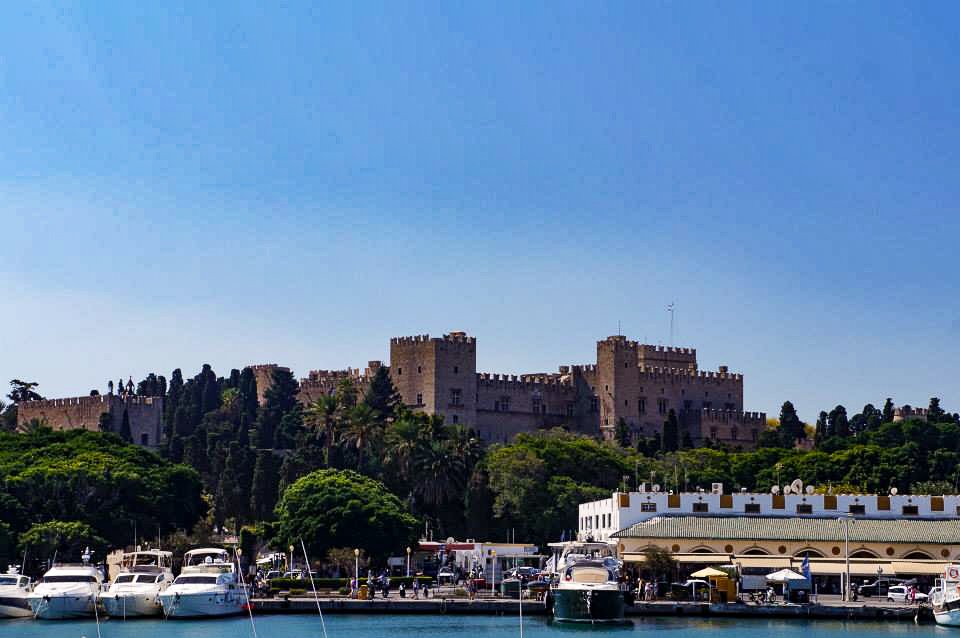
A UNESCO World Heritage site, the Medieval City of Rhodes is probably the first place you’ll go when you arrive on the island. The medieval city makes up the majority of the Rhodes Old Town and its huge walls are still standing today.
The Medieval City of Rhodes was first built by the Knights of St John, who occupied Rhodes from 1309 to 1523, fortifying the capital of the island. Rhodes is situated in the Dodecanese Islands of Greece, near the Turkish coastline and the city was finally conquered by Sultan Suleiman of the Ottoman Empire in 1522, after a six-month siege.
There are many medieval monuments in both the upper and lower towns and there are also some impressive Islamic landmarks in the city. One of the most significant is the Great Hospital, built by the knights in the 15th Century.
Contributed by Roxanne at Far Away Worlds
Travel From Home
Click here to watch
If you are planning to visit the Medieval City of Rhodes, consider watching the Rhodes episode of Julia Bradbury's, "Greek Islands" to get some more insight into the site. It’s an easy and accessible way to learn more about the history of the city, while showcasing the gorgeous scenery and great food.
Travel in Greece
Monasteries of Meteora
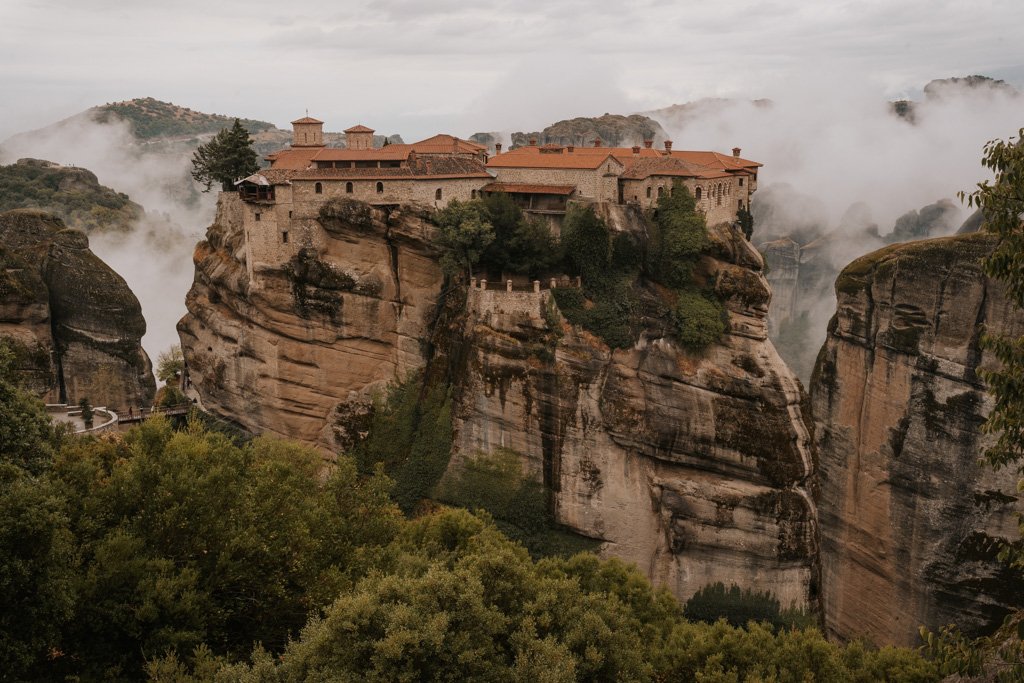
Perched on the top of 600-metre-tall rocks are the picturesque monasteries of Meteora. Centrally located in mainland Greece, the small town of Kalambaka sits at the base of these mighty outcrops. A hike up to the top of these Greek Orthodox buildings gives spectacular panoramas and also makes for one of the best views in the world.
Of the many Byzantine-designed monasteries, six are still active today and act as residences to a small number of monks and nuns. Amongst the natural beauty of this area, the monasteries are also home to many beautiful artifacts and wall paintings, that helped Meteora reach UNESCO world heritage status in 1988.
To best experience the monasteries at Meteora, start at the base of the ascension to the Holy Trinity Monastery of Meteora and climb approximately 45 minutes with stops along the way to admire the view. If you have more time, continue the trail to other famous sites such as the Monastery of Varlaam and The Great Metoran Holy Monastery.
By Haley of Haley Blackall Travels
Travel From Home
Click here to watch
To inspire your trip to Meteora, check out the James Bond movie, "For Your Eyes Only," which first premiered in 1981, where the Meteora monasteries were the focus of the filming and plot. The movie showcases beautiful aerial shots, the dramatic tall rocky outcrops and the history of the monasteries themselves.
Travel in Greece
The Best Movies in Greece to Watch Before Your Trip
Mycenae
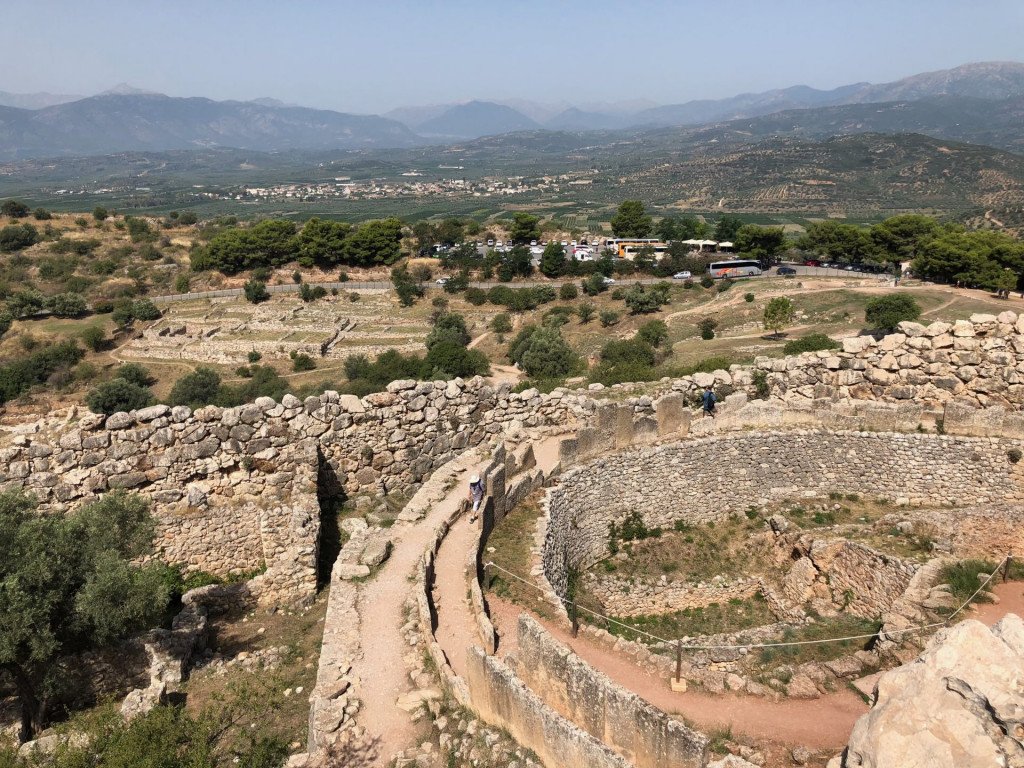
The Greek landmark Mycenae has given its name to the entire Mycenean Age, circa 1600 BCE -1100 BCE. The Myceneans were indigenous Greek people who were heavily influenced by the Minoans and other Mediterranean civilizations. They rose in power as Minoan influence receded. Located on the mainland in the region of Argolis, Mycenae was the central and most powerful town of the age.
According to Homeric legend, Mycenae was the home to Agamemnon, the great Greek king of the Trojan War. It is from here that he planned his ten-year attack on Troy to reclaim Helen, his brother Menelaus’ wife. After his return, it is in Mycenae that he is killed by his wife, Clytemnestra, and her lover because he had sacrificed their daughter Iphigenia. Again, it is in Mycenae that Clytemnestra is then killed by her children for murdering their father. These stories have been retold in countless books, plays, and artwork—allowing the modern visitor to experience the site with broad and profound reference points.
The actual history of the site is laced with these legends and impacted the archeological discoveries. The archaeologist, Heinrich Schliemann believed the Homeric legends were true. When he discovered a golden mask and other grave riches in a shaft grave, he declared he had found Agamemnon’s mask (now displayed prominently in the National Archeological Museum).
Visitors today can see the imposing Lion Gate entrance; the cistern that allowed the fortification to withstand a siege; Cyclopean Walls; burial tombs; the onsite museum; and rooms of the palace that, may indeed, be where Agamemnon and other legendary figures lived.
Erica of Trip Scholars
Travel From Home
Click here to listen
Enjoying any interpretations of Homer’s stories will greatly enhance your time at the site. Start with the originals: The Iliad and The Odyssey as audio books.
Travel in Greece
Mykonos Windmills

One of the most famous landmarks in Greece is the collection of windmills on the island of Mykonos. They are at a higher elevation than much of Mykonos Town, so they are visible from many spots. Also, when you come into the city by boat, these windmills are something you’ll immediately see. You can find this hill next to a beautiful area in Mykonos Town known as Little Venice.
The history of the windmills goes back to the 16th century, when the Venetians ruled the island of Mykonos. In the past, the people of Mykonos used the windmills to mill wheat, which made them very important to the citizens of the island. Nowadays, they aren’t in use anymore, and the only purpose they serve is as a tourist attraction.
The architecture of the windmills is beautiful! Each windmill is round, white, and has a pointy roof, which is very characteristic of the windmills on all the Cyclades islands. The architecture of the windmills makes the hill where you can see the windmills also one of the most Instagrammable places in Mykonos.
Contributed by Dymphe of Dymabroad
Travel From Home
Click here to read
"Mykonos Muse" is a great book that will make you want to visit Mykonos for sure. This book is all about the history and culture of the last 100 years, and it includes the windmills of the island.
Travel in Greece
Olympia
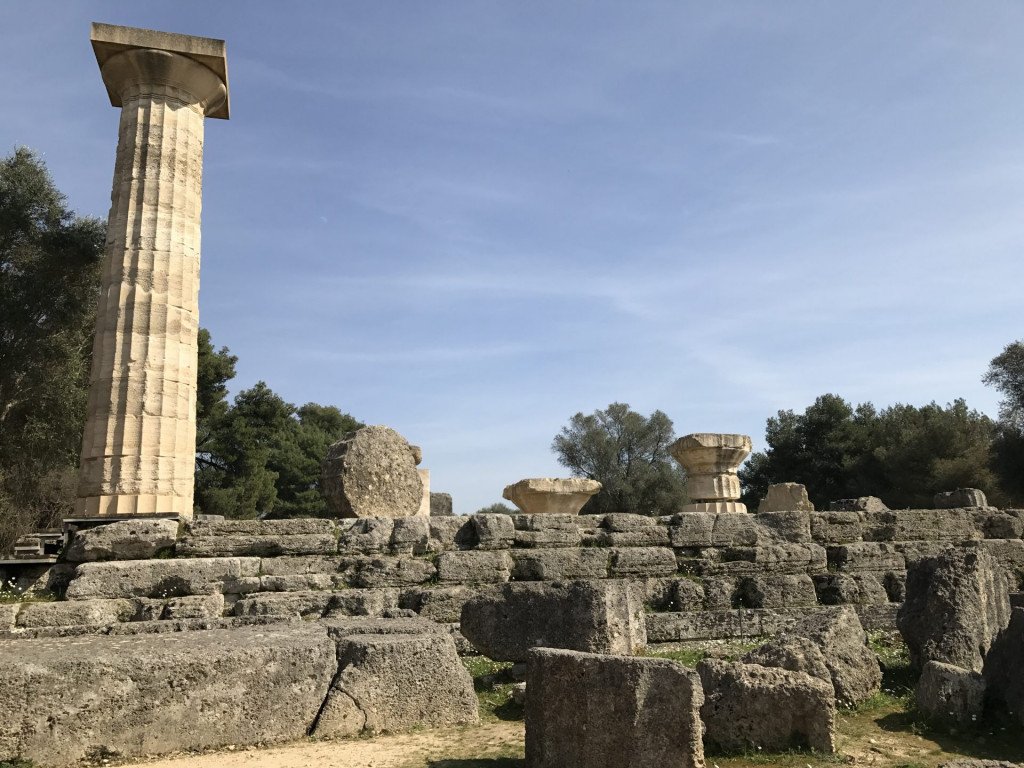
Every four years, the world celebrates one of ancient Greece’s most popular creations – the Olympic Games. At the archaeological site of Olympia, modern-day visitors can walk in the footsteps of those very first Olympic athletes who started it all.
Olympia was once the most important religious and athletic center in all of Greece. The area was first inhabited by a cult of Zeus as early as 1500 BC. The first Olympic games were held in 776 BC. Although very few original structures are still standing and it is mostly a collection of ruins, a visit to Olympia is still an awe-inspiring part of any Greece itinerary.
Today, visitors can wander through the areas where the athletes once trained. They can explore the foundations of the Temple of Zeus, which once housed a 42 foot-tall statue of the King of the Gods, one of the seven Ancient Wonders of the World. There’s also the Temple of Hera, where the Olympic Torch is still lit for every modern games before being taken to that year’s host country. The original stadium track, which once held up to 20,000 spectators, is also visible.
Contributed by Maggie at Pink Caddy Travelogue
Travel From Home
Click here to read
Before visiting Olympia, one of the best books to read is, "A Visitor’s Guide to the Ancient Olympics" by Neil Faulkner. It transports readers back in time to the 338 BC games and is a fascinating look at how things worked in Olympia.
Travel in Greece
Panathenaic Stadium
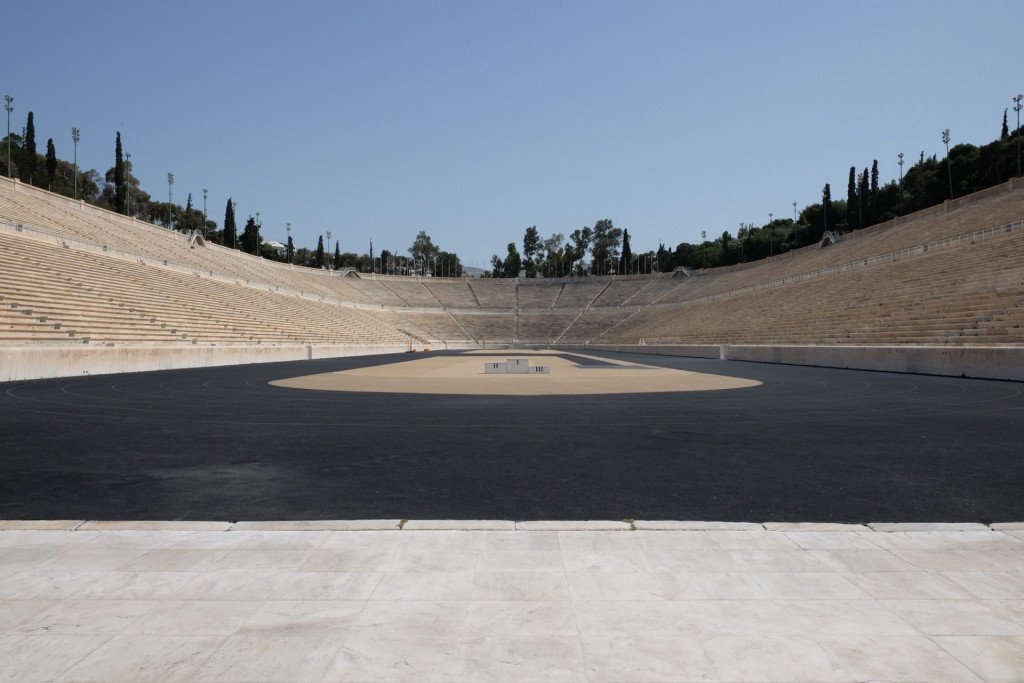
The Panathenaic Stadium is a magnificent, horseshoe-shaped stadium in central Athens. The stadium is one of the most important historic attractions in Athens and is the world’s only stadium built entirely of marble.
A stadium was first built on the site in around 330BC and was rebuilt in the 3rd century AD. 50,000 spectators could be packed into its marble seats to watch pagan celebrations, gladiatorial battles and contests with wild animals. As Christianity took hold and the events held in the Panathenaic Stadium fell out of favour, the stadium was abandoned.
The ruins were rediscovered and excavated in the 19th century, and the stadium saw its first events in centuries at the Zappas Olympics, an early attempt to restart the Olympic Games, before being used as a venue at the first modern Olympics in 1896. The Panathenaic Stadium is still the location where the Olympic flame is handed over to the new host city.
Contributed by Helen on Her Holidays
Travel From Home
Click here to read
To understand the history of the modern Olympics and the role of the Panathenaic Stadium, consider reading, "The Games: A Global History of the Olympics" by David Goldblatt. The book tells the story of the Olympic Games from the 1896 Olympics at the Panathenaic Stadium to the games of modern times, explaining the origin of Olympic traditions like the flame, the torch relay, and winners’ medals.
Travel in Greece
Panagia Ekatontapilliani, The Church of 100 Doors
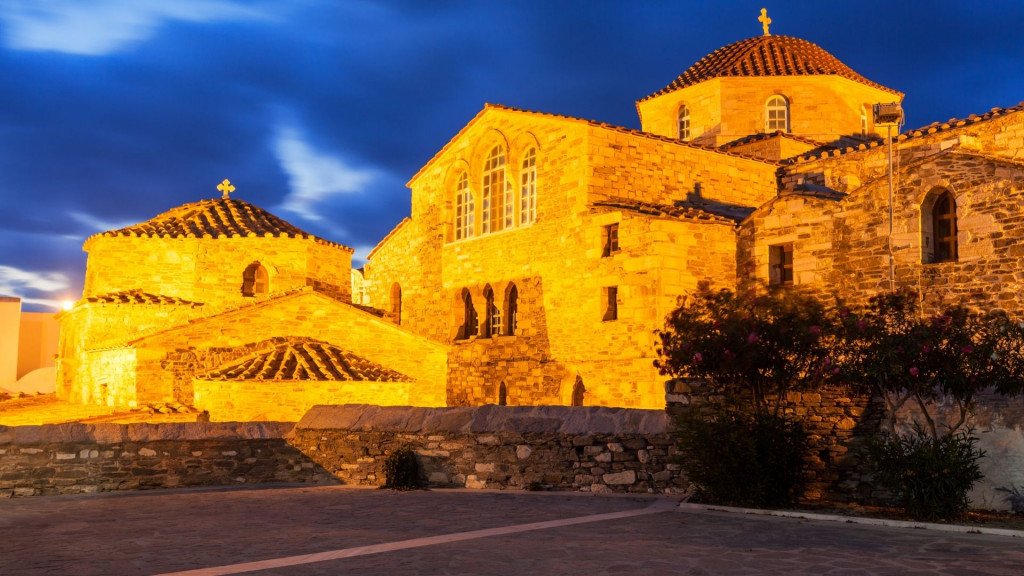
The Church Of 100 Doors is also known as Panagia Ekatontapilliani. It is situated in the capital of Paros- Parikia.
It is an important historic landmark and one of the best-preserved Christian churches in the country. The church was built in 326 CE. According legend, it was founded by Saint Helen, Constantine the Great’s mother after she found refuge on Paros in a storm on her way to the Holy Land.
It is an exceptional combination of different architectural styles. Some of the pillars are repurposed from earlier classical buildings. The church was renovated by Byzantine emperor Justinian, who added the dome. After that, the church went under various renovations by the rulers across the centuries. It is a prime example of a Greek Paleo Christian church with Byzantian and post Byzantian influences.
A common belief about the church is that it has 100 doors. There are not actually 100 doors, windows, gates, or openings of any kind. Legend has it that there are only 99 doors that are visible and the 100th door will open when Hagia Sofia in Constantinople becomes Orthodox again.
Exploring the Church of 100 Doors is among the top things to do in Paros.
Contributed by Paulina of Paulina on the Road
Travel From Home
Click here to read
Panagia Ekatontapilliani is one of many important landmarks included in, "Lonely Planet Greek Islands." This book is an essential addition to planning your trip and learning more about the country from home.
Travel in Greece
Click here to learn more
A link to the official site with current entrance information. You may need to use your browser's translate feature.
Santorini Caldera
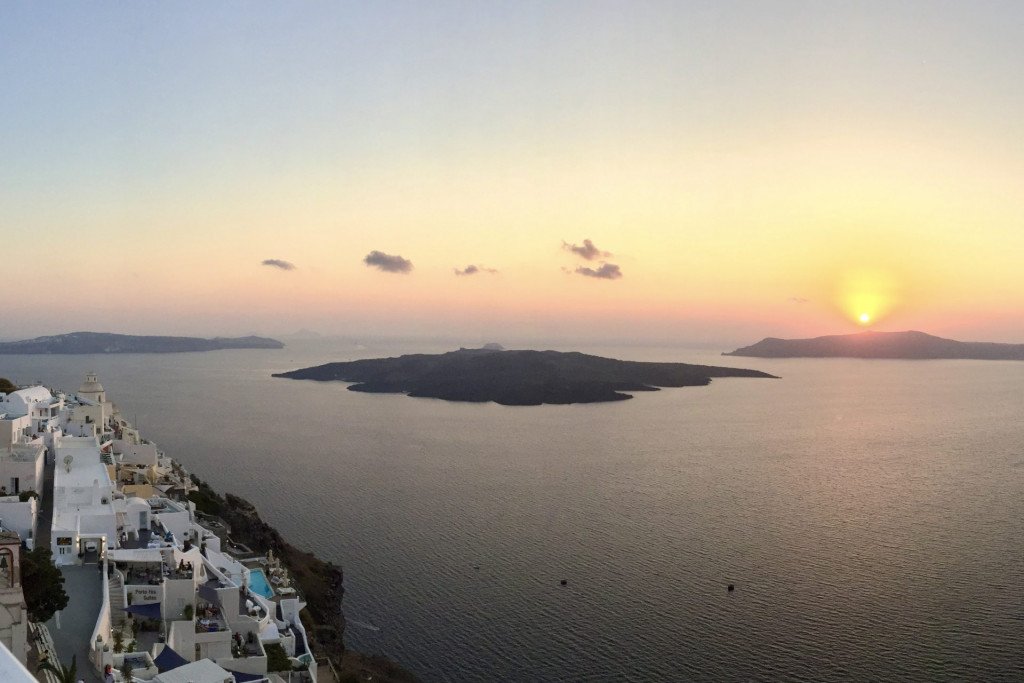
Santorini, one of the jewels of the Cyclades Islands, is the result of a massive volcanic eruption – and its caldera is one of the most iconic natural landmarks in Greece.
This stunning island in the middle of the Aegean Sea is all that remains from a huge cataclysmic explosion around 1610 BC. This was one of the largest volcanic eruptions in recorded history and it created a vast caldera, which was then flooded by the ocean. What is left today is a circular ring of islands, in the middle of which has since sprung new, much younger volcanic islands called Nea Kameni and Palea Kameni.
Overlooking the caldera and the new volcanoes are picturesque, white-washed towns, scattered precariously along the edge of the circular islands. It seems impossible that these towns have been built on such steep terrain, but when you get there, you’ll be glad they were. The main towns are Fira and Oia, and they’re delightful in and of themselves – but what most people come for is the breath-taking views of the caldera.
The views are wonderful all day, but they are spectacular when the sun sets. The west-facing towns have many restaurants and bars with terraces that allow you to marvel at the scenery – but be warned, they get booked up in advance, especially in peak season, so plan ahead!
Contributed by Martha from May Cause Wanderlust
Travel From Home
Click here to watch
If you want to learn more about the creation of Santorini's caldera, National Geographic made a documentary film called, "Doomsday Volcano." This film explores the geological clues that reveal how that devastating eruption unfolded.
Travel in Greece
Syntagma Square

Syntagma means “constitution” in Greek. The square got its name in 1843 when Athenians demanded a constitution from King Otto. It is still the place where Greeks gather to protest social and political issues.
Around the square are the Greek Parliament building and the National Gardens. Visitors can watch the hourly changing of the Presidential Guard at the Tomb of the Unknown Soldier. For book lovers, the Public Bookstore has a rooftop cafe with a great view of the square.
A unique experience in Athens is watching a movie in an open-air theater. One of the oldest theaters is Cine Aegli just steps from the square. It is quite a treat to watch a movie under the stars!
Contributed by Bernadette Young of Book Retreats
Travel From Home
Click here to listen
Syntagma Square is the usual starting point for a tour of Athens since it is a central hub for public transportation. A great audio tour to download is Rick Steves' "Athens City Walk". Of course, the tour starts at Syntagma Square and will lead visitors to tourist hotspots like Monastiraki square for bargain shopping, the Temple of Olympian Zeus, Plaka with its narrow cobblestone streets, and the Acropolis.
Travel in Greece
Temple of Apollo, Portara in Naxos
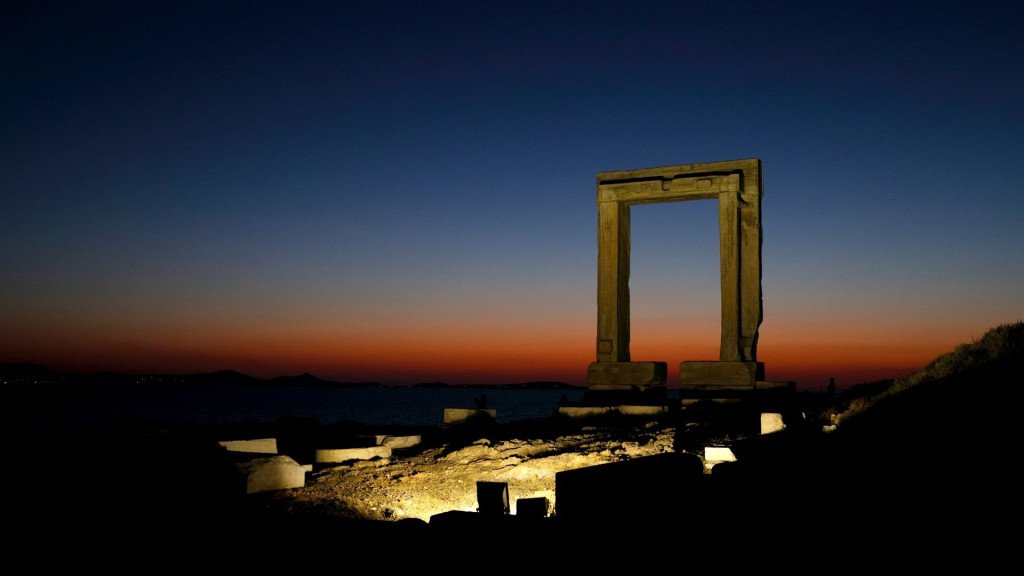
Undoubtedly one of the most iconic landmarks in Greece on the gorgeous island of Naxos is the famous Temple of Apollo. It is also one of the first views as your ferry enters the port of this Greek island in the Cyclades.
This incredible 2500-year-old marble doorway, also known as the Portara in Naxos, is set on the small islet of Palatia at the tip of the Naxos Port and jutting out into the Aegean Sea. It is believed that Lygdamis, the ruler of Naxos around 530 B.C., wanted to construct the largest and most awe-inspiring temple in all of Greece. Sadly, Naxos soon went to war against Samos which resulted in Lygdamis being ousted around 506 B.C. and the work on the temple came to a grinding halt.
The temple ruin is named the Temple of Apollo as many scholars believed it was meant to honor Apollo. This is because it faces towards Delos, which according to legend was Apollo’s birthplace. Others believe it was built to honor the patron god of Naxos, Dionysus.
Today, all that the remains are the three columned marble archway that you can visit free of charge by walking across the walkway that connects the mainland with the small islet. This is also a wonderful spot to enjoy some incredible sunsets from too!
Contributed by Marco from Travel Boo
Travel From Home
Click here to read
If you are interested in learning more about Naxos, as well as nearby Paros, then you may want to consider reading Denis Roubien's "Naxos - Paros - The Marble Greek Islands" that consists of travel stories, interesting imagery, and maps to depict the history of these beautiful islands. Not only will you learn about the Portara, but also a range of other fascinating landmarks and sights located on these beautiful Greek isles.
Travel in Greece
Temple of Poseidon
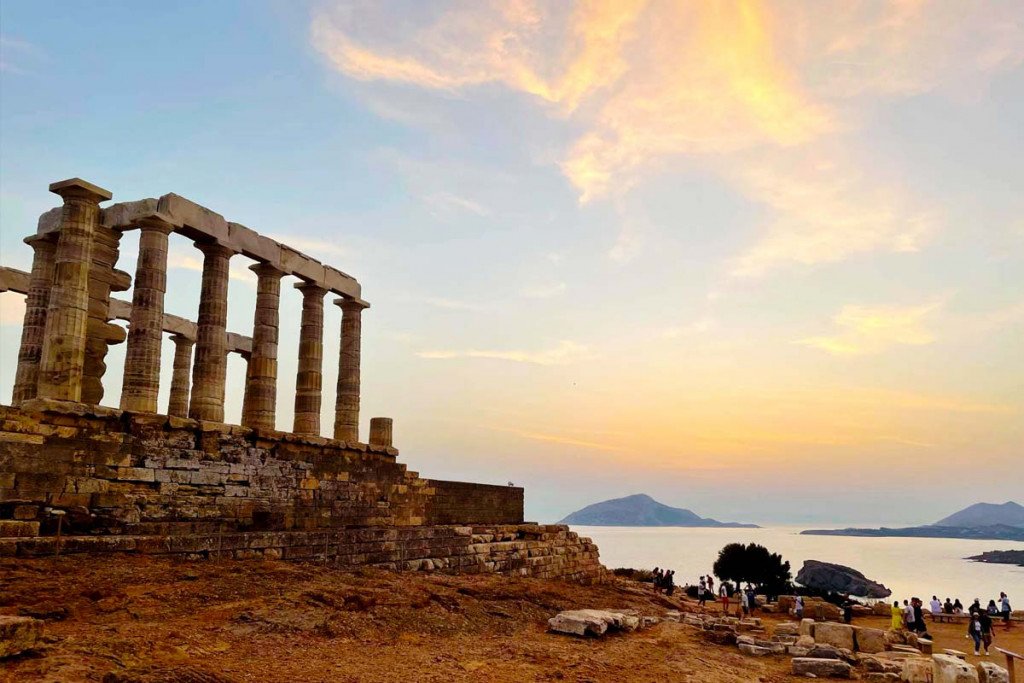
For those that love amazing sunset views, the Temple of Poseidon will not disappoint. The centuries-old temple has guarded the Cape of Sounio since the middle of the 5th century BC.
It is a little over an hour away from Athens and a perfect day trip. The calm blue waters beckon visitors and various tavernas dot the shore. There is a parking lot with a small fee and the site has a cover charge. At the end of the day, the sunset bathes the marble temple in shades of orange and the sky slowly turns purple. It is really relaxing but there can be crowds, depending on the time of year.
The temple is dedicated to the Greek God Poseidon, the brother of Zeus and God of the Sea. In ancient times, people believed storms were signs that Poseidon was angry, so they lay tributes at the temple to gain favor and to protect their sea journeys.
The temple is also mentioned in Homer’s Odyssey as the place where King Menelaus buried a helmsman, the person who steered his ship. In Ancient Greek Mythology, the area is believed to be the site where Athenian King Aegeus jumped to his death. The sea was named the Aegean Sea after him.
Contributed by Bernadette Young of Live a Relaxed Life
Travel From Home
Click here to read
To learn more about Greek mythology read Edith Hamilton's classic, Mythology: Timeless Tales of Gods and Heroes.
Travel in Greece
The White Tower of Thessaloniki
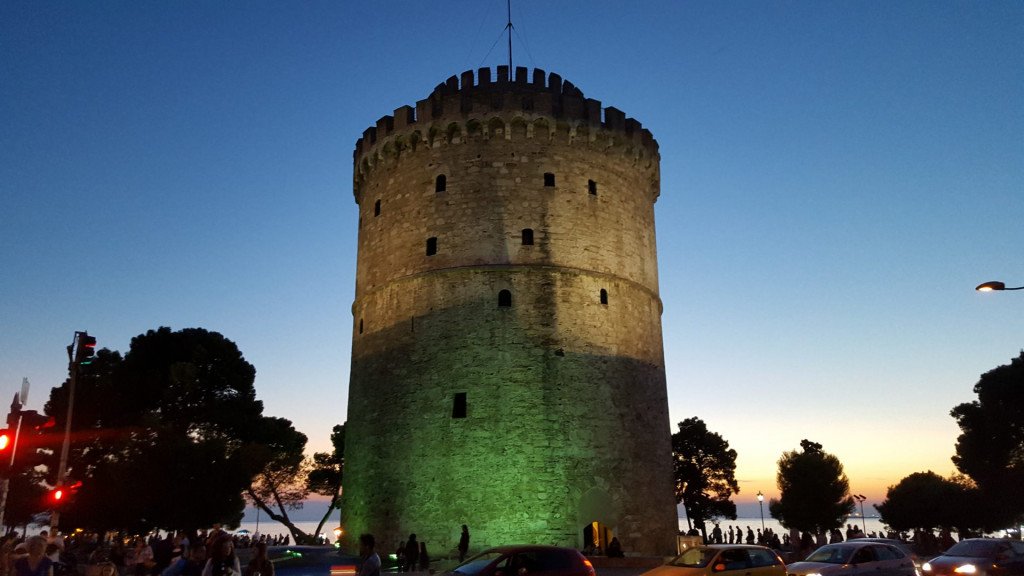
The White Tower is Thessaloniki’s most iconic landmark, gracing postcards and magnets throughout the region. The tower was built in 1430 when the Ottoman Empire took control of Thessaloniki.
Like most historic towers, the White Tower served as a watchtower for guarding the city against enemy ships. Despite the beautiful views and perfect location we enjoy today, during the Ottoman Empire it was a prison and site of mass executions. It was even known as the Tower of Blood.
During the First World War, the tower served as a communication center for Allied Forces.
The White Tower also houses a museum depicting Thessaloniki through different periods. There are six floors in the tower and a rooftop that provides lush views of the sea and city.
The entrance ticket to the museum is a bit cheaper in the off-season. You can also buy a combined ticket that includes the Museum of Byzantine Culture, the Archaeological Museum of Thessaloniki, and the monument of Rotunda. This ticket is valid for three days and hence perfect for two days in Thessaloniki.
Contributed by Nisha Dalal of Nerdy Footsteps
Travel From Home
Click here to read
Thessaloniki is a delight for history enthusiasts. To read more about the marvelous architecture during the Byzantine era, check out, "Wandering in Byzantine Thessaloniki." It also includes sections on Roman and Ottoman buildings. Apart from the gorgeous images from monuments, it divides the historical attractions into small walking tours.
Travel in Greece
The Trip Scholars website is dedicated to helping curious travelers find the best in trip research. Entertain and educate yourself from home to better appreciate and understand your destinations. If you are interested in Greek Landmarks, you will love our articles How to Create Your Own Archaeological Tour and Your Guide to Visiting the World’s Most Valuable Places. If you are traveling with kids or teens, enjoy Travel Education: 11 Inspiring Ways to Plan a Trip With Your Kids.
I hope this collection of landmarks in Greece has sparked your curiosity, both to visit, and to learn more from home! Have you visited any of these landmarks or do you plan to go? What resources do you recommend to other travelers to help them enhance their trips? Have you used any of the resources we’ve shared? Please tell me about it in the comments so we can learn from you!
Plan a Trip to Greece: The Guide for Curious Travelers
Erica
DO YOU WISH YOU COULD TRAVEL MORE?
Let's Connect
I’d like to send you a free gift!
The Curious Traveler’s 5 Step Guide to More Meaningful Trips

